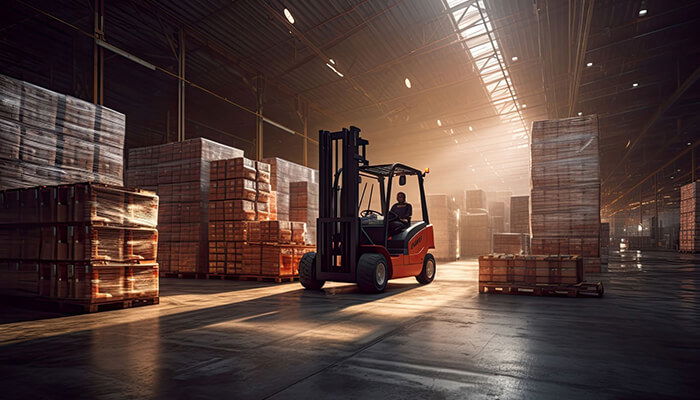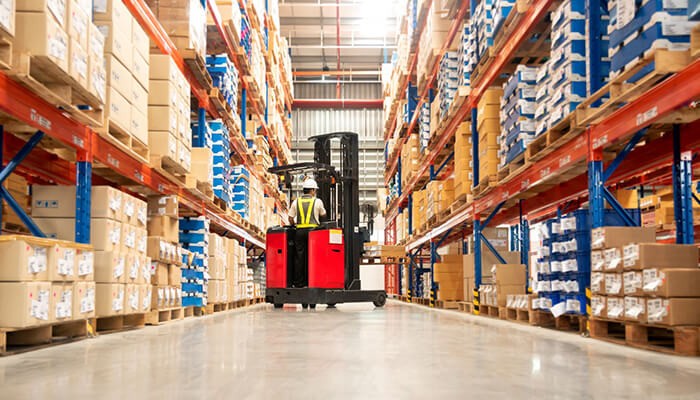Modern warehousing relies on innovation to boost efficiency and production. But can you imagine how holographic navigation using augmented reality (AR) wearables will transform warehouses? This futuristic idea uses digital technology to merge the actual and virtual worlds. It can bring warehouse shelving to a new level of precision and speed.
Warehouse workers can start their day wearing AR glasses as a gateway to the augmented reality world. Holographic navigation involves projecting three-dimensional visual signals into the real environment. This approach combines traditional methods with an intuitive and engaging experience.
Warehouse shelving maximizes storage space, simplifies inventory management, and ensures safe and accessible storage. In this idea from the future, workers can use AR glasses to look at a comprehensive navigational plan. The cornerstone of this map is shelf layouts, item placements, and real-time inventory levels.
AR wearable devices will monitor the workers’ movements. Real-time tracking enables holographic guidance to adapt instantly to the worker’s location. AR glasses will show item locations using digital shelf labels, saving time and preventing mistakes.
Warehouses may work like this in the future. But for now, here are a few ways to maximize space using warehouse shelving:
1. Use Vertical Space
Making the most of the vertical space can help you maximize warehouse space. You can use pallet racks, mezzanine platforms, and other high-rise shelving systems to maximize the entire warehouse’s height. You can install these platforms above existing shelf units to double the storage capacity. These solutions allow you to stack objects vertically.
Moving up frees up some floor space for additional processes or larger inventory. Suppose you have plenty of items with a low turnover rate. You can keep them on the upper shelves and put fast-moving items on the lower levels.
Multi-level shelving is an excellent option for warehouses with high ceilings. It maximizes vertical space without requiring substantial adjustments. At the bottom, you can use a cantilever to store long, bulky, or strangely shaped items for ordinary shelves.
Arms protrude outward from vertical supports on this sort of shelf. These arms provide simple loading and unloading of pipes, timber, or furniture. Warehouses handling building materials or specialty equipment can use cantilever shelving to free up floor space taken by larger items.
2. Implement Modular Shelving
Modular shelving units are versatile and adaptable to changing storage requirements. These tools contain separate components that you can combine and modify. Modular shelving allows you to create adjustable storage solutions to meet your requirements. It’s an ideal solution for warehouses with varying inventories.
Meanwhile, push-back shelving is one way to maximize modular storage. You can load the goods from the front, pushing older ones back when you add fresh items. As a result, older items move to the front, where they’re easily accessible without navigating many aisles.
This technique maximizes storage density while ensuring quick product access. Push-back shelving is great for inventory with shifting turnover rates, allowing easy stock rotation.
3. Mobile Shelving Systems
Mobile shelving systems or high-density shelving enable efficient storage by utilizing moveable aisles. Reducing the need for fixed aisles can increase storage density and reclaim lost space. Because it maximizes space while retaining accessibility, mobile shelving is helpful in cold storage facilities or those dealing with perishable commodities.
Whether you use first-in-first-out (FIFO) or last-in-first-out (LIFO), how you get things out of the shelves should be part of your strategy. FIFO shelving can help you take care of items with expiration dates.
On the other hand, LIFO shelving is appropriate for products that have a longer shelf life. Organizing shelves under these principles keeps inventory from becoming obsolete and increases storage efficiency.
4. Use Narrow Aisle Shelving
Narrow-aisle shelving creates compact storage layouts by utilizing aisles and specialized forklifts. It allows closer spacing between shelves and aisles, increasing storage density. However, your forklift or other warehouse equipment must be compatible with tight aisle arrangements.
While this method can be extremely efficient, it requires perfect coordination and well-trained operators to ensure safe maneuvering inside those spaces.
5. Cross Docking And Flow Racks
Cross-docking and flow-through shelving can help expedite the movement of items while eliminating the need for long-term storage. A cross-docking arrangement rapidly moves inbound items to outbound vehicles, avoiding the need for substantial storage space.
Flow-through shelving in the warehouse supports a similar procedure, allowing items to move from reception to shipping areas. These solutions are excellent for high-velocity warehouses where product turnover is critical.
Conclusion
Effective warehouse shelving systems are more than just storage solutions; they’re critical components of a well-managed logistics system. Each strategy can meet unique inventory and operating requirements, ensuring space optimization stays flexible and responsive.
As warehouse demands grow, a combination of these solutions will be critical in meeting the problems of space management and operating efficiency.



